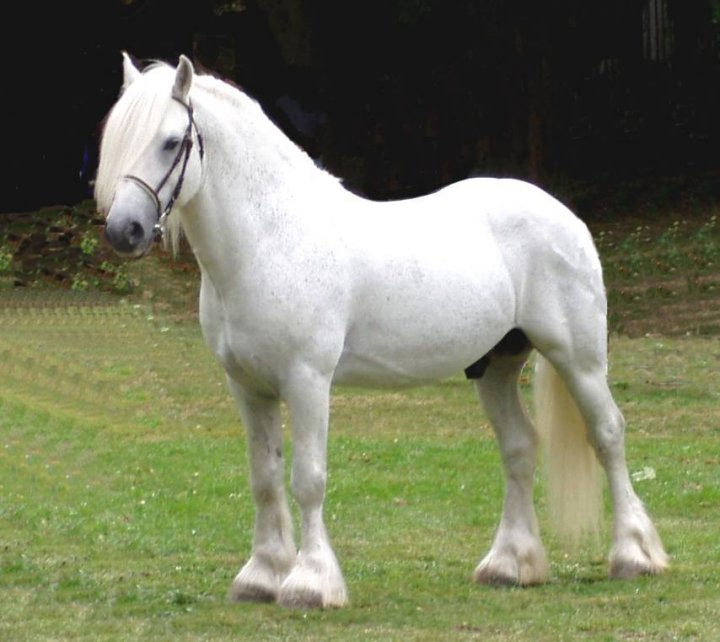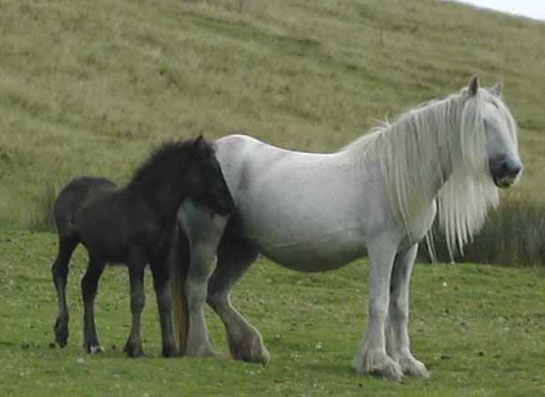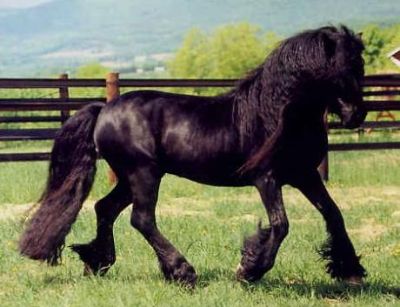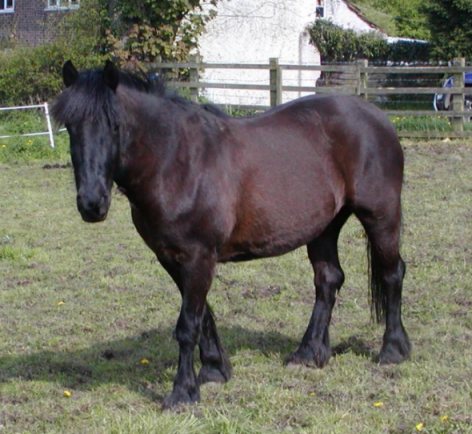



|
Fell Qualities
The Fell horses are considered very hardy and strong creatures. They can be found in Scotland, England, Ireland, Wales, and France. Generally used for riding purposes and harness work alike, you can also find them roaming the horse trails in England along the pathways that extend from the northwest to the northeast areas. Some of these animals have very distinct markings on them, such as a white star or black marking on their heads. They bode a strong and long stride that is excellent for riding comfortably all day.
Fell Temperament
Fell horses are categorized as very lively and fun at heart. Usually a tougher horse than the other breeds, and one that is very into the moment and alert, they are easily maintained and do not require much to keep them stable or used as work horses. Working on a farm is a common job for any horse, but this one can handle quite a bit of work during the day for such a smaller sized animal.
Fell Appearance
Fell horses are generally around fourteen hands at full grown adult size. They bode a chiseled head with a moderate crest. Additionally, they have sloping shoulders and a very strong back as well. They are bred in black, browns, gray, and bay. The Friesian blood lines were added into the Fell breed, making it a much taller horse. Their hindquarters are squared off and powerful. Their legs are full of bone and have excellent joints, muscular loins, and a very well built back that is excellent for carrying and pulling. They generally have a long, flowing mane and tail that add to this horse's beauty.
Fell Upkeep
Fell horses are simple to upkeep since they can reside in warm or cold climates. They also do not require many supplies to be maintained for most of the day. You can see them roaming with other horses, which can help in this breed being so independent. No major health issues have been reported thus far.
Fell History
Fell horses come from England, primarily in the Lake District areas. They are closely related to the Dales breed and were founded upon the Pennine Pony styles. Those Pennine versions were quite popular for many decades in England, and once the Romans moved into the territories, the newer cross breeds of theses Fell variations were introduced. The Fell was a breed that was slightly bigger in size than the traditional Pennine horses, making it more comfortable for larger passengers such as adults to ride along with ease on a larger horse. In those times, the Vikings would utilize those horses for pulling sledges and sheep herding. Around the thirteen hundreds, the wool trading business went into effect and in doing so, these horses would be commonly found transporting goods from one point to another.
|